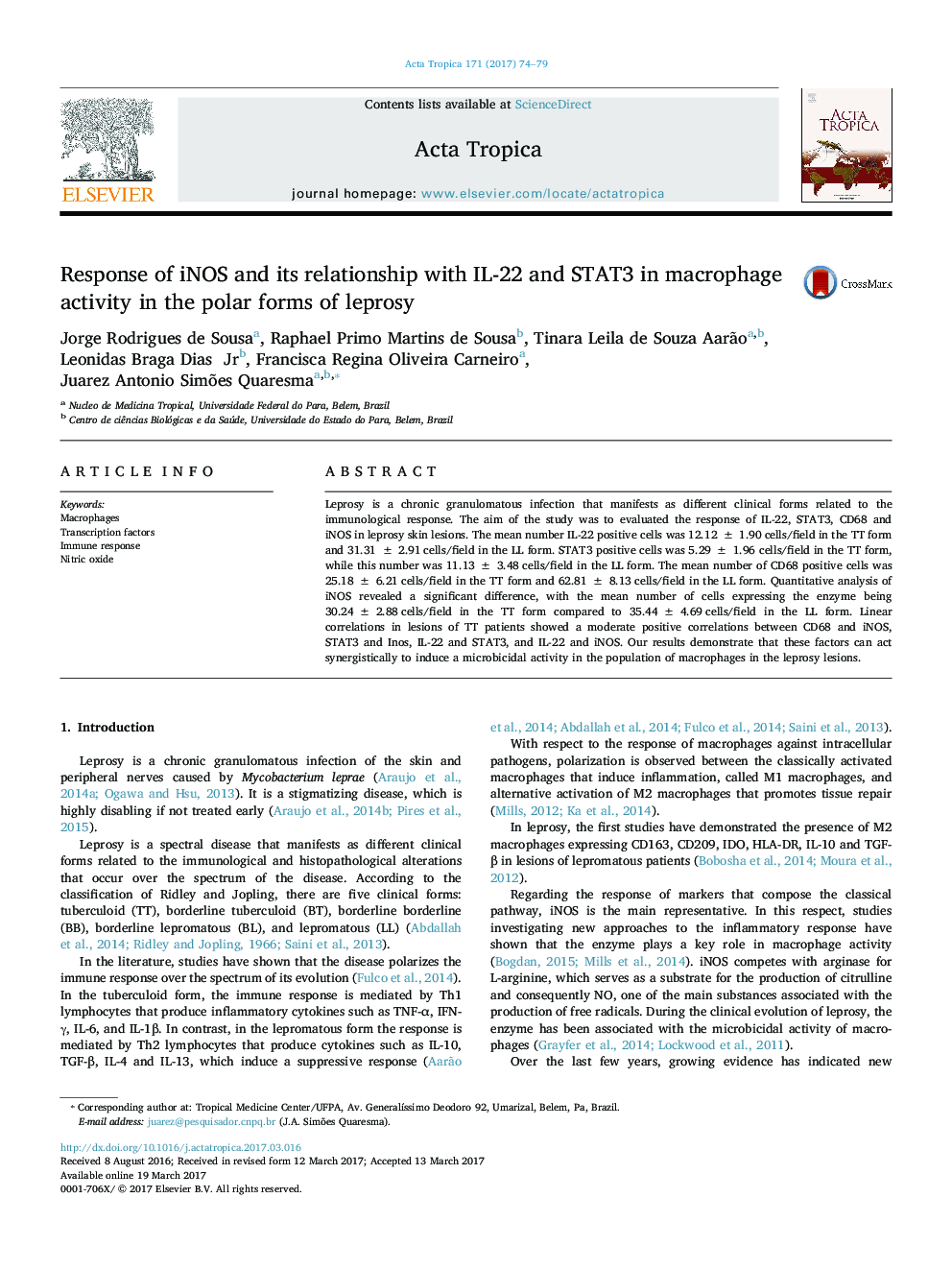| Article ID | Journal | Published Year | Pages | File Type |
|---|---|---|---|---|
| 5671164 | Acta Tropica | 2017 | 6 Pages |
â¢Leprosy is a chronic granulomatous infection related to the immunological host response.â¢The macrophage is one of the central cells in response to M. leprae.â¢New evidence shows participation of new cytokines in the immune response in leprosy.â¢IL-22, transcription factors and macrophage activity contributes to the immune response to M. leprae.
Leprosy is a chronic granulomatous infection that manifests as different clinical forms related to the immunological response. The aim of the study was to evaluated the response of IL-22, STAT3, CD68 and iNOS in leprosy skin lesions. The mean number IL-22 positive cells was 12.12 ± 1.90 cells/field in the TT form and 31.31 ± 2.91 cells/field in the LL form. STAT3 positive cells was 5.29 ± 1.96 cells/field in the TT form, while this number was 11.13 ± 3.48 cells/field in the LL form. The mean number of CD68 positive cells was 25.18 ± 6.21 cells/field in the TT form and 62.81 ± 8.13 cells/field in the LL form. Quantitative analysis of iNOS revealed a significant difference, with the mean number of cells expressing the enzyme being 30.24 ± 2.88 cells/field in the TT form compared to 35.44 ± 4.69 cells/field in the LL form. Linear correlations in lesions of TT patients showed a moderate positive correlations between CD68 and iNOS, STAT3 and Inos, IL-22 and STAT3, and IL-22 and iNOS. Our results demonstrate that these factors can act synergistically to induce a microbicidal activity in the population of macrophages in the leprosy lesions.
